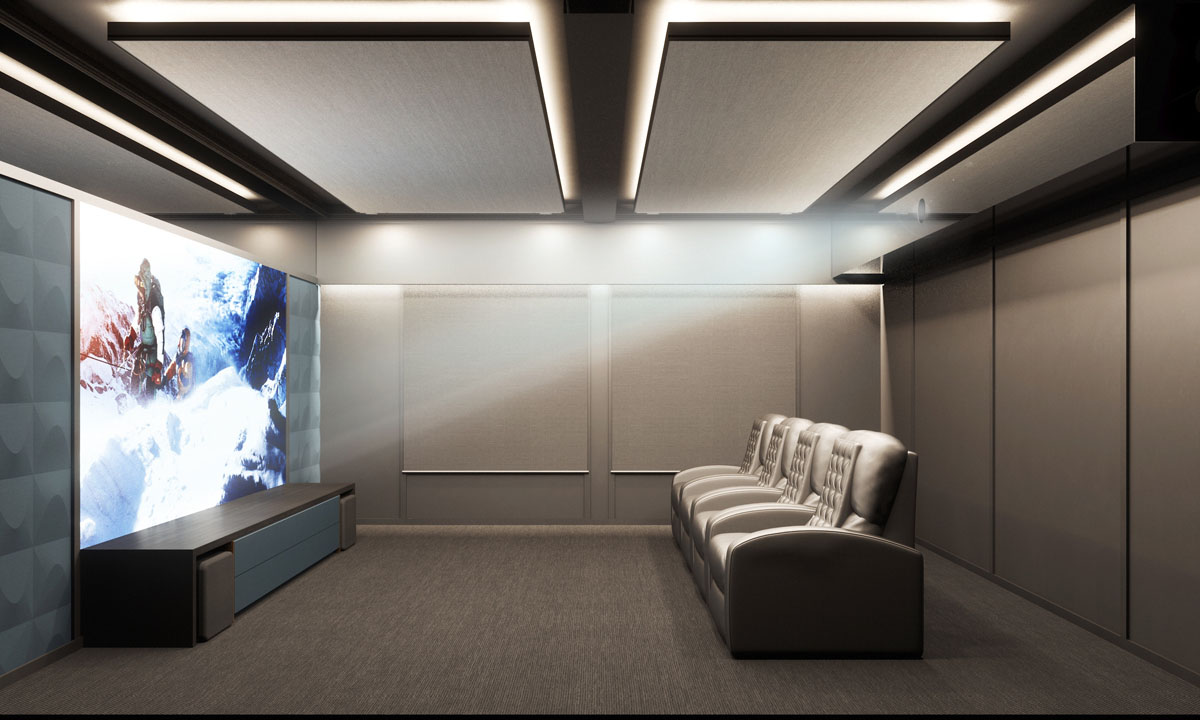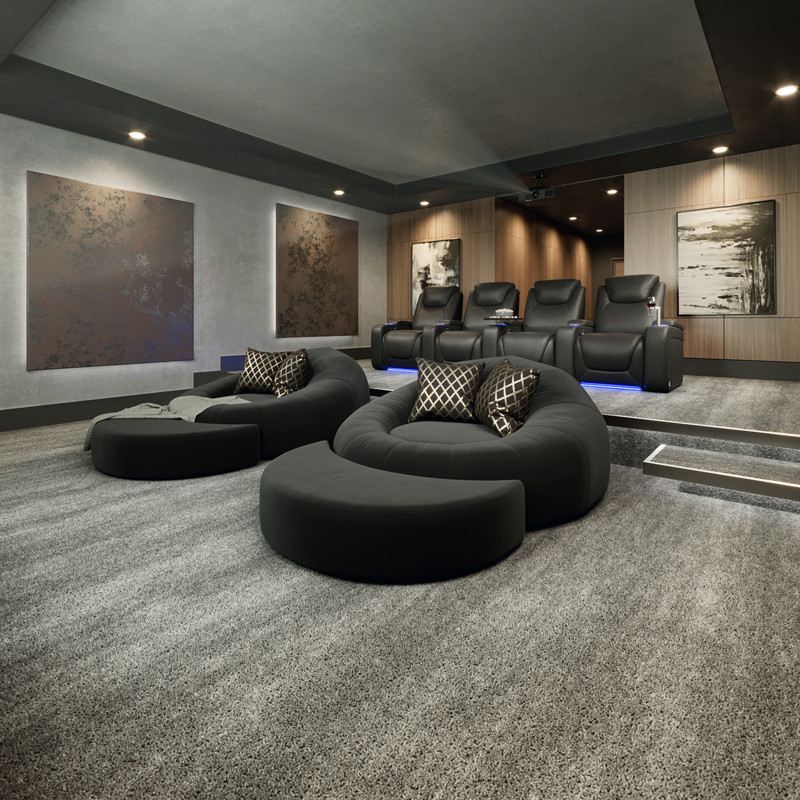Why Tampa Home Theater Installation Is a Life-Changer for Your Home Setup
Why Tampa Home Theater Installation Is a Life-Changer for Your Home Setup
Blog Article
Home Theater 101: Whatever You Need to Know for a Motion Picture Experience in the house
Producing a home cinema that measures up to the cinematic experience of a commercial theatre includes cautious factor to consider of multiple elements, including screen option, audio systems, and room format. Whether you are contemplating the optimal display size or the details of surround noise, understanding these principles is vital.
Picking the Right Screen
When establishing a home cinema, choosing the appropriate screen can make or damage the seeing experience - tampa home theater. The display offers as the centerpiece of your setup, affecting picture high quality, checking out angles, and overall aesthetic. Trick elements to think about include screen size, resolution, and type
Initially, establish the proper display dimension based upon your area dimensions and seating distance. A general guideline is to sit about 1.5 to 2.5 times the diagonal screen size for optimum viewing. Next, pick in between different screen kinds, such as fixed-frame, motorized, or retractable displays, each offering unique benefits. Fixed-frame displays commonly offer the best picture quality, while mechanized options permit flexibility in room usage.
Resolution is an additional essential factor. For an absolutely immersive experience, take into consideration a display made for 4K or perhaps 8K content, making sure intensity and clarity. Furthermore, consider the display's gain, which affects brightness and comparison; a higher gain can boost brightness in well-lit rooms, while a reduced gain might be much more suitable for darker settings.
Picking Audio Equipment
Audio devices is a critical part of any home theater system, considerably improving the general watching experience. The option of audio gear can figure out the deepness, quality, and immersion of noise, essential for creating a cinematic ambience.
When selecting audio tools, take into consideration a border audio system, which usually consists of a receiver, numerous speakers, and a subwoofer. A 5.1 or 7.1 channel system is advised, where the initial number stands for the audio speakers and the 2nd the speaker, offering an immersive soundscape. The receiver is the heart of the system, handling sound and video clip signals, and should sustain modern styles like Dolby Atmos for a boosted spatial experience.
Quality speakers are crucial; search for models that supply a balanced sound account with great bass feedback. Floor-standing audio speakers can produce richer sound, while shelf choices save area. In addition, think about cordless choices for simplicity of setup, although wired systems typically supply superior efficiency.

Optimum Seating Plans
Developing an ideal home cinema experience pivots substantially on ideal seating setups. The setup of seats plays a critical duty in both comfort and watching quality, directly affecting the overall cinematic experience.
First, take into consideration the display size and seeing range. A common standard is to position seats at a range around 1.5 to 2.5 times the angled dimension of the screen. This guarantees an immersive experience without stressing the eyes.
Next, altitude is crucial. The back rows must be greater than the front to her explanation avoid blockages if your seating is in a tiered format. For flat seats, ensure that Learn More Here the front row is not also near the display, which everyone has a clear line of vision.
Moreover, take into consideration the plan in terms of social dynamics. Group seating can enhance the public experience, while private seats may be liked for individual viewing.

Lastly, prioritize convenience with ergonomic seats that sustains extended watching durations. Incorporating reclining chairs or cushioned seats can considerably enhance the experience, making the home cinema a recommended location for both entertainment and relaxation.
Lighting and Atmosphere
Reliable lights and atmosphere are important elements of a well-designed home movie theater, as they considerably affect the seeing experience. The appropriate lights can boost the cinematic feel, while poor options can detract from it. For optimal results, think about a layered lighting approach that includes ambient, task, and accent illumination.
Ambient lighting supplies general illumination, ensuring that the area is not totally dark, which can strain the eyes. Dimmer switches are extremely suggested, permitting for adjustments based on the material being checked out. Job illumination, such as wall surface sconces or floor lights, uses useful illumination for activities like analysis or navigating the space without interfering with the total ambience.
Accent lighting can be utilized to highlight building attributes or create centerpieces, including depth and rate of interest to the space. LED strip lights behind displays or along shelves can provide a refined radiance that boosts the aesthetic experience without overwhelming the customer.

Wiring and Installation Tips
A tactical electrical wiring configuration is crucial for accomplishing optimum efficiency in your home theater system. Proper electrical wiring not only guarantees top notch audio and video signals yet also improves the overall visual of your room. Begin by mapping out your layout, identifying where each element will certainly be placed, including your screen, speakers, and receiver.
When choosing cords, focus on high-quality, properly gauged electrical wiring to reduce signal loss. HDMI cables ought to be used for video clip links, while audio speaker wire must match the specs of your audio speakers and amplifier. Choose in-wall rated wires to follow safety and security standards and preserve a tidy look.

Verdict
In summary, developing an extraordinary home cinema experience requires cautious consideration of numerous aspects, consisting of screen choice, audio tools, seating arrangements, illumination, and circuitry. Each part plays an important function in achieving optimal performance and setting, eventually boosting the enjoyment of home entertainment. By focusing on these aspects, a motion picture atmosphere can be effectively reproduced, permitting immersive watching experiences that match standard cinema setups. Interest to information in each area is essential for overall complete satisfaction.
Developing a home cinema that matches the motion picture experience of an industrial theatre involves mindful factor to consider of multiple parts, including display selection, audio systems, and area format.When setting up a home movie theater, choosing the right screen can make or break the watching experience. Next off, select between numerous screen kinds, such as fixed-frame, mechanized, or retractable displays, each offering distinct advantages. For a really immersive experience, take into consideration a screen designed for 4K or also 8K web content, ensuring sharpness and quality.In summary, creating a remarkable home movie theater experience calls for cautious factor to consider of different elements, consisting of screen selection, audio devices, seating arrangements, illumination, and wiring.
Report this page